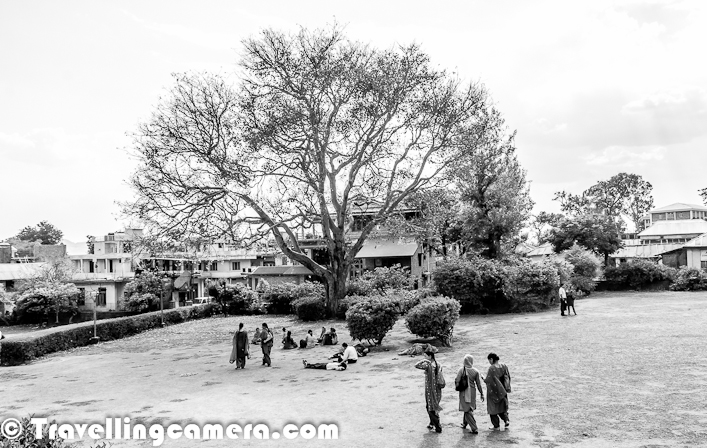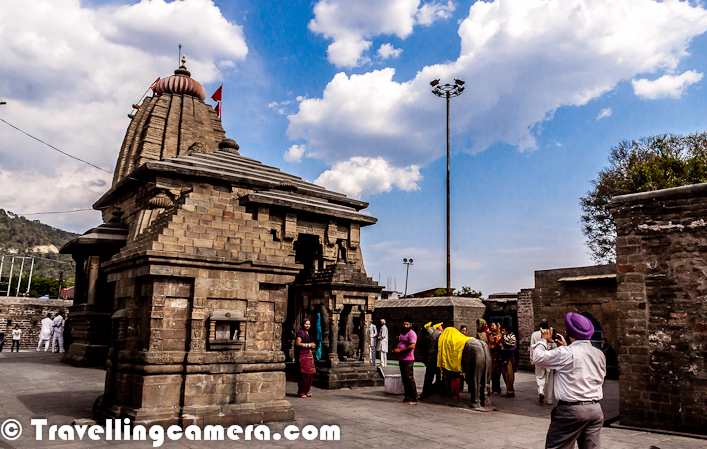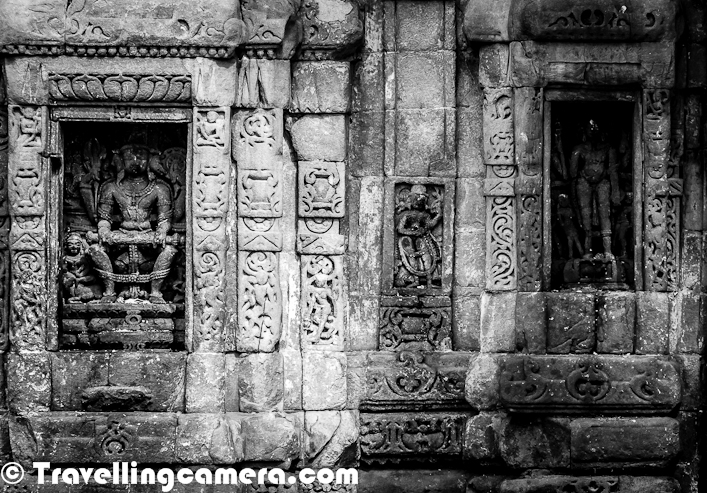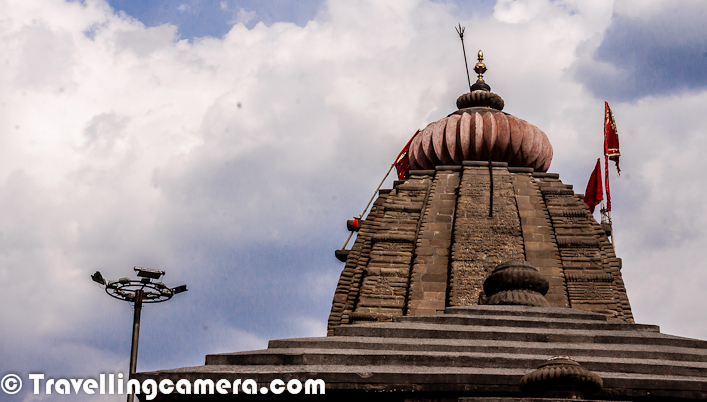Baijnath is famous for it's old Shiva temple which was built in 13th Centuary. Shiva is considered as ‘the Lord of physicians’. Baijnath was originally known as Kiragrama and it lies on Pathankot-Palampur-Manali highway (National Highway No. 20) almost midway between Kangra and Mandi. The present name Baijnath became popular after the name of the temple. The town is located on the left bank of the river Binwa, which is a corrupt form of ancient Binduka(a tributary of river Beas). Let's check out this Photo Journey to know more about this temple in Baijnath...
This famous temple of Shiva is very close to main road which connects Palampur with Mandi, via Jogindernagar. Baijnath town is almost on border of Kangra Border. Mandi Boundary starts at around 4-5 kilometers from main town. This temple comes on left as we move from Palampur to Mandi via Baijnath Town.
Temple is visible from main road and there is a well maintained garden in it's back. At times, monkeys can also be seen around the temple and this green garden. This temple is on a hill top but there is no climb involved to reach the main campus. On other side of the temple there is a deep valley with wonderful view of flowing river with snow capped hills in background.
Overall surroundings of Shiva Temple are pleasing...
Temple in current form is a beautiful example of the early medieval north Indian temple architecture known as Nagara style of temples. The Svayambhu form of Sivalinga is enshrined in main temple that has five projections on each side and is surmounted with a tall curvilinear Shikhara.
Baijnath is popular for it's ancient temple which is
dedicated to Lord Shiva. Neighbouring towns of Baijnath are Palampur in
Kangra district and Jogindernagar town in Mandi District.
There are two balconies on two sides of main temple which is dedicated to Lord Shiva. Above photograph shows some portions of a balcony...
There is a small porch in front of mandapa hall that
rests on four pillars in the front preceded by an idol of Nandi, the
bull, in a small pillared shrine. Whole temple is enclosed by a high
wall with entrances in the south and north. The outer walls of the
temple have several niches with images of gods and goddesses. Numerous
images are also fixed or carved in the walls.
It is believed
that durin Treta Yug, Ravana worshiped Lord Shiva in Kailash for
getting invincible powers .
In the same process, to please the almighty he offered his ten heads in
havan kund. Influenced by this extra ordinary deed of Ravana, Lord Shiva
not only restored his heads but also bestowed him with powers of
invincibility and immortality.
Most of the walls around main temple and outer walls have different designed carved out...
The temple attracts a large number of tourists and pilgrims from different parts of India and abroad throughout the year. Special prayers are offered in the morning and evening every day besides on special occasions and during festive seasons.
The temple attracts a large number of tourists and pilgrims from different parts of India and abroad throughout the year. Special prayers are offered in the morning and evening every day besides on special occasions and during festive seasons.
Sculptures of Chamunda Devi and Kartikey can be seen on the walls of main Shiva Temple. To have very specific details about these designs, check out official website of Baijnath Shiva Temple at http://www.baijnathtemple.com/
Makara Sankranti, Maha Shivaratri, Vaisakha
Sankranti, Shravana Mondays, etc. are celebrated with great zeal and
splendor. A five day state level function is held here on Maha Shivratri
every year.
More photographs of Baijnath Shiva Temple can be seen at Lonely Planet website - this is throwing 404 now :(
If you liked this post and found it helpful, I would request you to follow these things when traveling -
- Manage your waste well and don’t litter
- Use dustbins. Tell us if you went to a place and found it hard to locate a dustbin.
- Avoid bottle waters in hills. Usually you get clean water in hills and water bottles create lot of mess in our ecosystem.
- Say big no to plastic and avoid those unhealthy snacks packed in plastic bags. Rather buy fruits.
- Don't play loud blaring music in forests of jungle camps. You are a guest in that ecosystem and disturbing the locals (humans and animals) is not polite














.jpg)
Comments
love Himachal for awesome views :)
http://sushmita-smile.blogspot.in/
@Amit - This is one of the my favorite regions in Himachal. Very peaceful and serene.